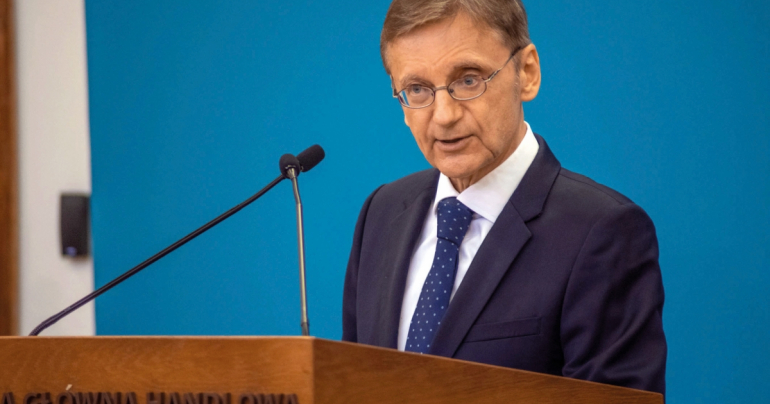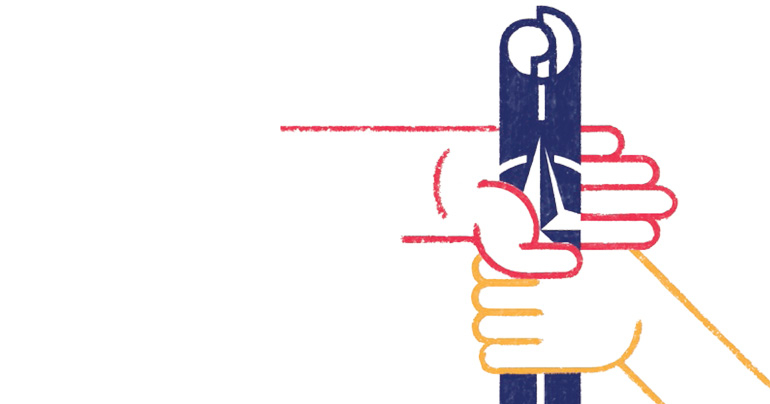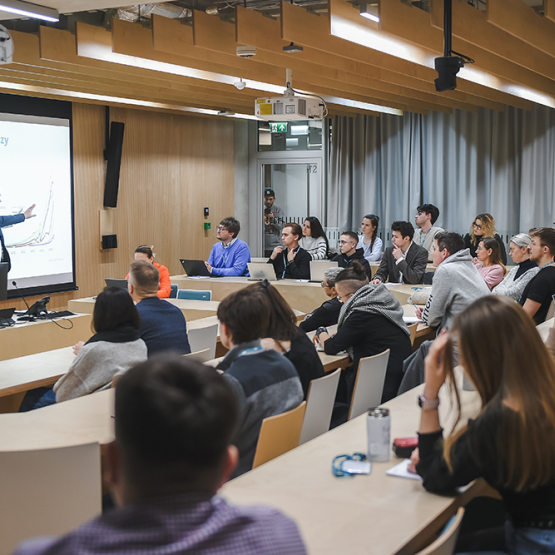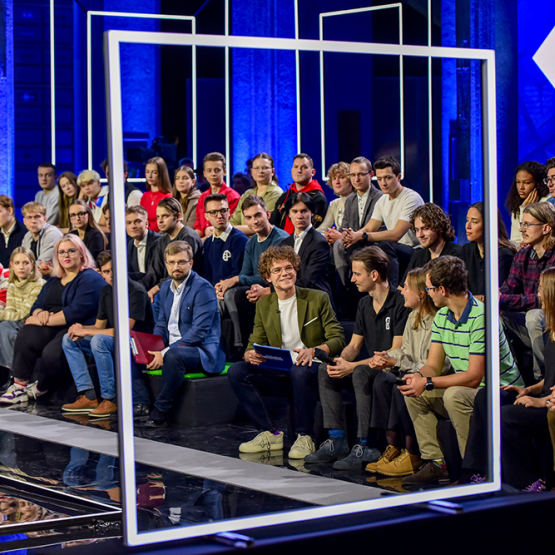Poland’s Road to NATO from the Perspective of Poland’s Ambassador to Washington

Ladies and gentlemen, I am greatly honored that HM the Rector entrusted me with the task of presenting to you the story of Poland’s road to NATO from the perspective of the function I held for six years in Washington and, before that, for nearly a year at the Polish Ministry of Foreign Affairs in Warsaw.
The last time I gave a speech here in the Main Hall was during the “East-West” International Student Seminar in the second half of the 1970s. At that time, I would never have thought that it would take Poland little more than a decade to become part of the West and, moreover, to play a key role in the systemic transformation of Central and Eastern European countries, and so contribute to the fall of the post-Yalta order.
20 years of Alliance’s membership
Exactly 30 years ago, a wave of freedom that swept across our part of the continent was unleashed by Poland’s political breakthrough, whose main events were the Round Table Agreement, the 4 June 1989 elections, the formation of Tadeusz Mazowiecki’s government, and the adoption of the Balcerowicz Plan. Had these events, spurred by the Solidarity movement, not taken place, this year would be marking neither the 20th anniversary of Poland’s accession to NATO nor 15 years of Poland’s EU membership.
These twenty years of Poland’s membership in NATO prompted HM the Rector to ask me to look back on how, in the 1990s, Poland steered its way into the Atlantic Alliance and dropped anchor there for good.
Apart from contributing to anniversary celebrations, I trust my speech can also provide a useful piece of background of the current stage of Poland-NATO and Poland-USA relations. In recent years, after Russia’s annexation of Crimea, we have seen these relations intensify, which has clearly been reflected by the latest decisions to strengthen U.S. military presence in Poland.
Poland officially embarked on pursuing NATO membership in early 1992, when this strategic objective was first entered into government documents. Poland’s efforts turned into an actual campaign in the fall of 1993, and were continued for six more years—until March 1999.
Successive Polish governments took turns completing this relay race. They worked constructively with the opposition and followed their overarching foreign policy with certainty and professionalism. This was important, as Poland had a high turnover rate among its top decision-makers; during my six-year-long stay in Washington, I worked with four Ministers of Foreign Affairs, five Ministers of National Defense, four Prime Ministers and two Presidents.
On the one hand, this could have been indicative of Poland’s political instability. On the other hand, we strove to convert weakness into strength by showing that despite frequent changes Poland pursued an unwavering and active foreign policy, had a rapidly developing economy and strong citizen support for the state’s national security goals.
From the very outset, we had never doubted that we were part of a momentous process, that anchoring Poland within the Atlantic Alliance would be an event of historic significance. For the first time in centuries Poland was to receive strong security guarantees while becoming—institutionally—part of the Euro-Atlantic community of free and democratic nations that share the same values.
The international NATO enlargement process of the time can be presented as a function of five interacting variables. Variable one: USA’s support of the Alliance’s enlargement—absolutely critical due to Washington’s leading role in NATO. Variable two: the positions adopted by other NATO members (Germany, the UK and France in particular) on the enlargement issue. Over several years, the stances of these member states underwent a major evolution—from reluctance and reserve to parliamentary ratification of the Alliance’s enlargement. Variable three: the “Russian factor,” dually construed—as Moscow’s attitude (constantly negative) to NATO enlargement, and as Russia’s internal situation, which the U.S. and the other allies were reckoning with as they weighed the “pros” and “cons” of enlargement. Variable four: the positions of those Central and Eastern European countries which at the time were not seen as realistic candidates for NATO enlargement—chiefly Ukraine, whose hypothetically negative attitude towards NATO enlargement could have vastly complicated the process. Variable five: the attitude of countries which were seeking accession to NATO with a fair chance, i.e. Poland, the Czech Republic and Hungary, and earlier Slovakia—before it was dropped from the shortlist due to its domestic policy. The following factors played a decisive role in this group of countries: (1) their internal situation—the advancement of their economic reforms combined with their macroeconomic stability, maturity of democracy, respect for human rights, and civilian oversight of the military; (2) their relationships with neighbors; (3) how actively they were seeking NATO membership—predominately in relations with the U.S.
The first variable played the greatest role by far. Without strong U.S. leadership and the evolution of the U.S. position to deep commitment, the enlargement of NATO would have been inconceivable.

RZECZYOBRAZKOWE
Evolution of the American position
Let us review this evolution, bearing in mind that the “United States” is an aggregate of the institutions of the executive branch (the White House, the Department of State, the Pentagon, and the CIA) and of the powerful Congress, where no less than 67 votes in the 100-member Senate had to be ultimately won. The United States played a special role in this process not only because of its leadership in the Alliance, but also because of the power and specific procedures of the Senate, where the ratification hurdle was the highest of all the parliaments of NATO member countries.
From Poland’s perspective, one can identify seven stages of the evolution of America’s involvement in the cause of NATO enlargement, which in turn determined the successive stages of the international process of Alliance enlargement. I would like to discuss the first few phases and only briefly mention the others.
Three RAND Corporation analysts were the first in America to come up with a concept of NATO’s eastward enlargement in early 1993. That daring proposition sparked a debate among American experts, but at that stage it was pronounced rather unrealistic. Several months later, at the opening ceremony of the Holocaust Memorial Museum in Washington, new U.S. President Bill Clinton met with the leaders of Poland, the Czech Republic and Hungary. All three leaders, Lech Wałęsa, Václav Havel and Arpad Goncz, called on the American president to include the reborn democracies in the Atlantic Alliance.
These events opened Stage One of the NATO enlargement process and, at the same time, the evolution of the U.S. position on the issue. This stage was to last until the January 1994 NATO summit in Brussels, with the following events among its highlights:
- In the summer of 1993 in Warsaw, Senator Richard Lugar becomes the first American politician to publicly declare his support for our accession to NATO.
- A few weeks later, this matter receives a new boost from a Yeltsin-Wałęsa joint communiqué issued during President Boris Yeltsin’s visit to Warsaw. The communiqué contains a statement which is practically tantamount to Russia’s declaration that it has no objections to Poland’s intention to join NATO. It creates a stir among Western politicians, who are unprepared for this course of events.
- Upon returning to Moscow, President Yeltsin backs out of his earlier position under pressure from his political entourage and the military. He makes this known in a letter to President Clinton and to other Alliance leaders: while objecting to the enlargement of the Alliance, he proposes that the CEECs be covered by security guarantees of Russia and the West.
- Russia’s protest triggers a response from Poland. Efforts in pursuit of NATO membership are stepped up, especially by the newly appointed Minister of Foreign Affairs Andrzej Olechowski.
- As a result, the U.S. and NATO leaderships come under pressure from two flanks: from Russia and Poland, the latter supported by the Czech Republic and Hungary. It is then that the Partnership for Peace (PfP) concept matures. This concept provides for the development and structuring of military cooperation between post-communist countries and NATO. Warsaw perceives this concept as a substitute for membership rather than a vehicle of entry into the Alliance.
- At the turn of 1993, these developments spark an intensive campaign aimed at inducing the U.S. leadership to make an unequivocal declaration about NATO’s opening up to the East. The community of Polish Americans mounts a large-scale pressure campaign, meeting with administration officials and sending thousands of letters to the White House. The administration starts drafting confidential internal memoranda on the Alliance’s future. Chief of the National Security Council Anthony Lake is the strongest advocate of enlargement. Nevertheless, the Pentagon leadership’s position is unmistakably unfavorable.
- A visit paid to Warsaw by Madeleine Albright, then U.S. Ambassador to the UN, and by General John Shalikashvili, head of the Joint Chiefs of Staff, plays an important role. On the eve of a NATO summit in Brussels, both politicians attempt to win Warsaw over for the Partnership for Peace, but the Polish leaders expressly criticize that concept and insist on a clear-cut commitment to the Alliance’s enlargement. The American side is apprehensive that Lech Wałęsa might publicly renounce the PfP.
- Eventually, all these factors cause President Clinton to make his famous statement. In January 1994, shortly after the NATO summit in Brussels, he says that NATO enlargement is no longer “a question of whether, but of when and how.” In the context of Bill Clinton’s statement, the original concept of the Partnership for Peace now comes to be interpreted as a road that can lead to NATO membership.
President Clinton’s declaration opens Stage Two of the NATO enlargement process and of the evolution of the U.S. stance. This phase spans the period from January to December 1994. The U.S. administration’s already positive attitude towards enlargement has yet to be translated into an active policy. Late 1994 brings a discernible shift, under the influence of following factors: First, maturing of views within the administration itself, though some senior officials remain unwilling. Second, mounting external pressure from Poland and other Visegrád Group countries; President Clinton’s visit to Warsaw in July 1994 acts as catalyst. Third, continued intra-American pressure from Polish Americans, backed by growing support from other ethnic groups with Central European roots, some journalists and international security experts, with the strong voice of Zbigniew Brzezinski. Fourth, the emergence of new elements on the American political scene: a group of Republican leaders espouse the cause of NATO enlargement, both for ideological reasons and according to the logic of competing against the ruling Democrats, whom they accuse of lack of vision and passivity in international policy. Republican Senator Hank Brown, acting in cooperation with the ambassadors of Visegrád countries, pushes through a legislative “amendment” which is eventually adopted by the Senate, in defiance of the administration’s position, as the NATO Participation Act in October 1994. This document is meant to smooth the Visegrád Group countries’ way to the Alliance. A month later, importantly for our countries’ transatlantic aspirations, the Republicans win a firm majority in both houses of the Congress for the first time in 40 years.
Due to the combined impact of all these factors, by the end of 1994 the U.S. administration was already committed to NATO enlargement and had a clearly defined policy based on the concept of “parallelism”: parallel NATO enlargement and building special NATO-Russia relations, so as not to antagonize Moscow by Alliance enlargement.
At this point, we reach Stage Three, which starts in December 1994 and ends in September 1995. Urged by the U.S., defense and foreign ministers of NATO member states announce the commencement of joint work on a “Study on NATO Enlargement”. Work is conducted for nearly a year, which enables the Americans to gradually win over member states opposed to the enlargement idea and to elaborate further their own position.
All NATO member countries adopt the Study in September 1995. The Sixteen agree to work towards enlargement of the Alliance on a case-by-case basis. However, the Study does not provide an answer to one of the principal issues: the enlargement timetable. This raises concerns that the entire process could be spread over many years or even stalled for good by some unfavorable developments, whether international or on the American political scene. At the same time, Washington takes efforts aimed at involving Russia in cooperation, in line with the “parallelism” concept.
On the one hand, Moscow appears to recognize the weight of special relations with the Alliance. On the other, it is apprehensive that its consent to the establishment of such relations will be construed as tacit consent to NATO enlargement—which it is actually anxious to prevent or, failing that, to delay as much as possible and to minimize its political and military consequences.
Stage Four spans the period from September 1995 to October 1996, when Bill Clinton announces to Polish Americans in Detroit, some two weeks before the presidential election, that in the following year NATO would hold a summit where the first candidate countries would be invited to start accession negotiations with the Alliance.
The American presidential campaign created a situation favorable to enlargement. Neither the Republicans nor the Democrats could remain indifferent to Central Europe-linked voters’ requests that both candidates issue clear declarations on opening NATO up quickly. Republican candidate Bob Dole made his statement in June 1996 in Philadelphia, where he called for admitting four countries, including Slovenia, to NATO in 1998.
Russian presidential elections were unfavorable to NATO enlargement. In the months preceding the election, until July 1996, the U.S. administration steered clear of publicly discussing NATO enlargement, as it feared this could be detrimental to presidential candidate Boris Yeltsin, who was seen in Washington as a guarantor of Russia’s progress towards democracy and a co-operative approach to relations with the West. At this stage, some special factors appeared on Poland’s road to NATO, which required Polish diplomats to step up their activity in Washington.
In November 1995, Lech Wałęsa, the universally recognized symbol of the overthrow of communism, lost the election in Poland. Shortly thereafter, the then Polish Prime Minister was accused of collaborating with Russian intelligence. In addition, the elections brought about changes in the leadership of the Ministries of Foreign Affairs, Defense and Internal Affairs —the agencies of key importance to Poland’s international cooperation. This prompted some circles in the U.S. to adopt a wait-and-see attitude which, however, did not last long. Already in July 1996, new Polish President Aleksander Kwaśniewski paid a successful visit to Washington. Meanwhile, former President Lech Wałęsa continued to promote Poland’s NATO membership in the United States.
Stage Five covers the period from October 1996 to July 1997, i.e. the Madrid NATO summit that invited Poland, the Czech Republic and Hungary to accession negotiations. Notice should be taken of three developments in this phase. First, in the several years preceding Bill Clinton’s Detroit speech, NATO enlargement supporters simultaneously targeted the administration and the Congress. In the Congress, two objectives were pursued: to prepare the ground for a future decision on ratification and to induce Congress members to pressure the administration, first for a declaration of explicit will to enlarge NATO, and thereafter for a specific timetable. Then, following the President’s Detroit declaration, enlargement supporters formed a united front with the administration, as together they focused on the Senate, where the matter of admission of new members to the Alliance was to be conclusively decided. Second, one major issue required Poland’s special attention in our contacts with the US administration. That issue was the “quality” of NATO membership. This concerned ascertaining that, during the simultaneously conducted negotiations with Russia on special relations with NATO and on the CFE (Treaty on Conventional Armed Forces in Europe), no provisions were endorsed that might restrict the prospective new NATO members’ room for maneuver and make them in fact second-rate members. That risk was inherent in Moscow’s demands for, among other things, non-deployment of allied forces in the territory of the new NATO members and for restrictions on NATO’s use of their military infrastructure.
In March 1997, NATO disclaimed any intention of having substantial NATO combat forces permanently stationed in the new members’ territory in the current and foreseeable security environment. It ought to be noted that Russia continues to groundlessly invoke that declaration and criticize NATO’s military presence in Poland. Groundlessly, as Moscow’s policy notably altered the security situation in recent years.
Third, in May 1997, two months before the Madrid NATO summit, Russia and NATO signed an agreement in Paris. The agreement, ultimately called “The Founding Act”, established a mechanism of permanent Russia-NATO cooperation. Not only was that event highly significant in its own right, but without it a consensus on enlargement would have been difficult to achieve and maintain, both in the U.S. political establishment and among the European allies.
Stage Six covers the period between July 1997 (the Madrid summit) and 30 April 1998 - the date when the Senate voted on ratifying the resolution on admitting Poland, the Czech Republic and Hungary to NATO. In that period the “united pro-enlargement forces” campaigned vigorously for Senators’ “yes” votes. The campaign extended beyond the Capitol itself and engulfed any and all groups that could influence the Senate.
The ratification vote results were impressive: 80 “for” to 19 “against”. This vote closed Stage Six and opened the final phase, Stage Seven, which continued until March 1999. In this period, NATO member countries continued with parliamentary ratification of the NATO enlargement, while Poland, the Czech Republic and Hungary prepared for entering the Alliance’s military structures.
The great finale of the pro-enlargement marathon commenced by Poland in 1992 came on 12 March 1999, when in Independence (USA) the ministers of foreign affairs of Poland, the Czech Republic and Hungary – among them Bronisław Geremek - handed their NATO accession documents to Secretary Madeleine Albright.
Poland’s contribution to NATO enlargement
Let us just briefly discuss Poland’s contribution to the process which culminated in NATO enlargement, in particular the enlisting and deepening of American commitment.
The tasks implemented by Poland can be divided into five categories of activity. They formed a work strategy that the Polish Embassy in Washington spread over several years.
The first task was to influence those American groups and individuals on whom NATO enlargement was directly or indirectly dependent.
Second, Poland contributed to the development of the concept of NATO enlargement and Europe’s new security architecture. One example is Poland’s proposal regarding Ukraine, whose NATO membership was an abstract concept at the time. This proposal was similar to the solution devised for Russia, i.e. Ukraine was to be granted a special security status under a separate Ukraine-NATO agreement.
The third task was to take part—both on a broader national forum and in narrower opinion-forming circles—in the American debate on NATO’s future. In this debate, we had to answer such questions as: With the Cold War over, why should America stir up conflict with Russia by enlarging NATO, which could lead to a new arms race or even military confrontation? Why expand NATO, when its enlargement will only lead to its crippling, as potential new members have weak economies and armed forces, and some will bring their regional problems into the Alliance? Who will bear the financial burden arising from the enlargement in a situation where European NATO members reluctantly contribute to common defense on a solidarity basis? And, if an actual threat appears, why should American lives be put at risk in defense of Warsaw or Prague?
Our fourth task was to build a positive image of Poland as a country which had paved other nations’ way to freedom, achieved a great success, and will be an asset, not a burden for NATO.
Finally, the Embassy’s fifth task was to ensure appropriate Washington–Warsaw interaction focused on launching (or extinguishing) Polish activity that could help achieve progress in NATO enlargement. This concerned, among other things, the reform of armed forces, Polish-Jewish relations, and the arms trade issue. Of particular significance was the matter of Colonel Ryszard Kukliński, who until 1997 had been under a sentence passed by the communist-ruled Polish People’s Republic.
Exerting pressure on American centers
As concerns our first task, i.e. exerting pressure on American institutions and individuals, it was fulfilled by both Polish diplomats in the U.S. and Polish politicians on their numerous visits to Washington. And, of course, Polish Americans were greatly involved in NATO enlargement and operated in parallel. Professor Zbigniew Brzeziński’s role in this regard is invaluable: he leveraged his unique position in America to single-handedly, enormously contribute to Alliance enlargement. And, Jan Nowak-Jeziorański’s input also cannot be overestimated; there is vast evidence of his tireless efforts.
The targets of Polish pressure were situated in six different types of environments and institutions. First, in the federal administration: the White House, the Department of State, and the Pentagon. Second, in the U.S. Congress, in particular in its upper house, the Senate. Our task was obvious: conduct talks and take other actions designed to diminish the number of senators not in favor of NATO enlargement and swell the ranks of those in favor (very few at the outset). Third, in the opinion-forming groups and among individuals such as think tanks, academic centers, and in the circles of experts on international affairs or former (but still influential) politicians. Fourth, in the American media community. Of the two leading American dailies, The Washington Post was in favor of NATO enlargement, while The New York Times was consistently against it. Fifth, among organized interest groups; their support for the NATO enlargement cause was sought so that they, in turn, could impact American decision-makers, senators in particular. They included business and finance leaders, along with the leaders of unions, veteran organizations, and ethnic organizations. Finally, in power centers outside the Washington “beltway”. For instance, two years sufficed to persuade numerous state legislatures and municipal councils to pass resolutions of support for Poland’s NATO membership. This support created a favorable climate in Washington around the NATO enlargement issue and it certainly carried weight with Senate members from the states which adopted the resolutions of support.
Open door policy
In conclusion, it ought to be noted that questions on further NATO enlargement started to arise several weeks after the ceremony in Independence, when Poland was already a NATO member. The prevailing tenor of these discussions was that a second round would come in the foreseeable future, but hardly anybody expected that all seven then-aspiring countries, including the Baltic states, would be invited to participate. These countries were: Bulgaria, Estonia, Latvia, Lithuania, Romania, Slovakia, and Slovenia. Yet it was known from the outset that the situation of the aspiring states was much more comfortable than that of our countries several years earlier. The trail had been broken and a valuable enlargement know-how was already available. The aspiring states could now draw from the experience ranging from “homework” to lobbying in the U.S. Senate. From the very beginning of its NATO membership, Poland firmly championed an open door policy. Ou support for NATO enlargement has always sprung from three sources: Poland’s national security interests, Poland’s vision of a post-Yalta, integrating Europe, as well as Poland’s solidarity with nations who had shared the same lot for nearly half a century and who now shared the same aspirations.
But that is another story, to be told on a different occasion... That said, I would once again like to thank HM the Rector for his invitation, and you, ladies and gentlemen, for your kind attention.
Jerzy Koźmiński, President of the Polish-American Freedom Foundation, Ambassador of the Republic of Poland to the United States from 1994 to 2000, Secretary of State at the Polish Ministry of Foreign Affairs from 1993 to 1994, graduate of the Faculty of Foreign Trade at the Central School of Planning and Statistic in Warsaw (currently the Warsaw School of Economics).



